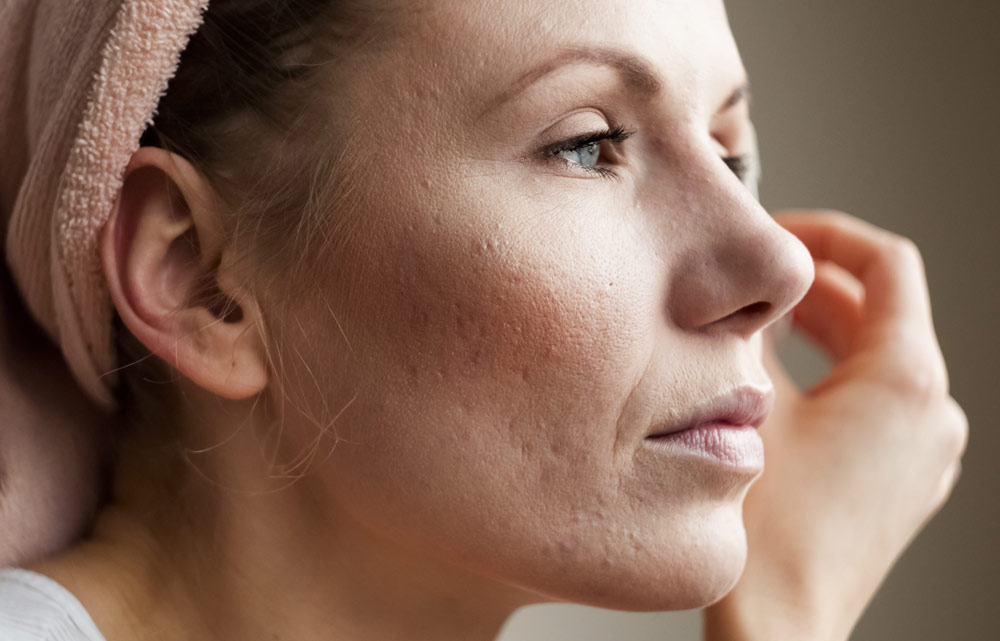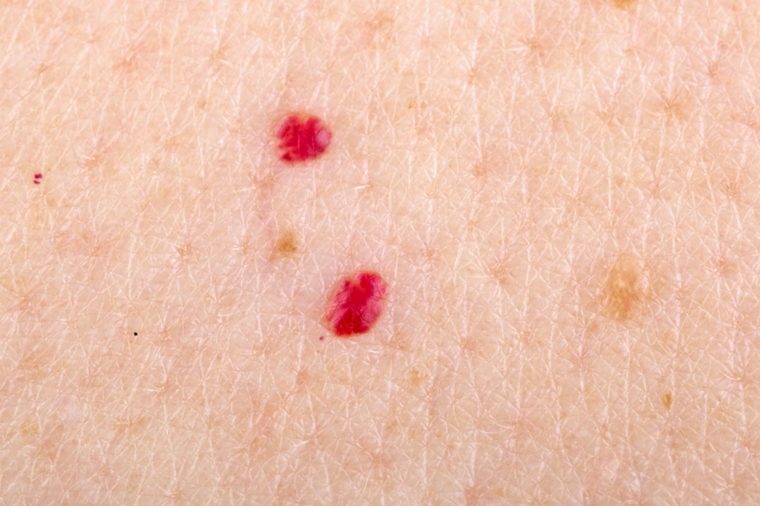
Acne + Acne Scarring

Here at Revival Medi Spa we tailor treatments and home plans to combat your skin concerns. We have a variety of advanced treatments, and we understand each client has different needs. Because of this, we ensure we conduct a thorough skin diagnosis prior to starting any treatment.
What Is Acne?
Acne is a long-term skin disease that occurs when hair follicles are clogged with dead skin cells and oil from the skin. Acne can be mild, moderate, or severe, and can present as blackheads, whiteheads, pimples, oily skin and can result in scarring.Affected areas are typically the face, upper chest and back – areas that have a higher number of oil glands.
The treatment of acne depends on the severity of the condition in each individual.
- Mild acne is usually identified by the presence of clogged skin follicles, which is normally limited to affecting only the face, with only sporadic inflammatory lesions.
- Moderate acne is identified as when an individual suffers from a higher number of inflammatory papules and pustules on the face, compared to those with more mild cases of acne. Sufferers of moderate acne are also likely to find some inflammatory papules on their chest or back. Severe acne is identified as painful ‘bumps’ or nodules lying under the skin present on the face, back and chest, extensively covering the skin.
- Nodulocystic acne or cystic acne describes severe cases of inflammatory acne. True cysts are not common in those suffering from acne, and so the term severe nodular acne is preferred.
Acne begins when the oil secretions from the skin’s oil glands plug and therefore clog the small openings that exist in the skin for hair follicles. Blackheads (small flat spots with dark dirt-like spots) are formed when those openings are large, and whiteheads (small flesh toned lumps) are formed when openings are small. Both of these kinds of clogged pores can turn into pimples which appear as swollen, tender inflammations or deeper nodules or lumps. For those suffering from cystic acne, the nodules present as firm, sore swellings below the skins surface which are at risk of becoming infected.
- Acne neonatorum and acne infantum can also affect newborns and infants. Acne neonatorum can present as a pimply rash on the face, and usually has no lasting effect, clearing in weeks, and usually clears within weeks with no lasting effect. Acne infantum on the other hand may last longer, with more severity resulting in scars.
Scars
Sufferers from acne also often suffer from acne scars, with an estimated 95% of people affected. These scars are caused by inflammation within the dermal layer of skin that has healed abnormally, and usually occurs when the acne is severe.
Acne scars are classified based on whether the healing has led to excess collagen deposition or loss of collagen around the acne.
The most common scars are atrophic acne scars, which have lost collagen. Other scars are icepick scars, boxcar scars, and rolling scars. Ice-pick scars are deep and narrow (less than 2 mm across) that are set in the skin. Boxcar scars are round or indented scars with sharp edges. These scars can vary from 1.5–4 mm across in size. Rolling scars are wider than icepick and boxcar scars (4–5 mm across) and have a wave-like pattern of depth in the skin. Hypertrophic scars are the most uncommon acne scars, with increased collagen content after healing that are firm and raised from the skin, and are contained within the borders of the original wound. Keloid scarring can form scar tissue outside of the margins of the area and tend to occur more often in men and people with darker skin tones.
Post inflammatory hyper-pigmentation is a result of nodular acne lesions. These lesions can leave behind a swollen darkened mark after the original acne mark has healed. This is caused by the inflammation of the mark stimulating pigment-produced skin cells to produce more melanin pigment, darkening the skins appearance.

Treatment Options
At Revival Medi Spa, we offer simple but effective treatments for all types of acne - mild to severe
Each individual clients skin needs differ and for this reason we start with offering a complimentary skin diagnosis. During your skin diagnosis consultation we will create a tailored treatment plan for you which will include a home care routine. this treatment plan will be reassess as time goes on to ensure you are receiving the best treatment options to suit your skin needs and combat your concerns.
Treatments at Revival include:
- Advanced Specialised Facials
- LED therapy
- E-Light Therapy
- Skin Needling
- Specialised home-care products
What Are The Causes Of Acne?
The causes of acne are not fully known or understood. Stress can be an aggravator of acne but does not cause it alone. Some causes can be:
Hormones
Commonly, acne in teenagers begins with an increase in hormone production. Both girls and boys during puberty produce high levels of androgens – the testosterone producing men’s sex hormones. This testosterone causes the body to produce more sebum, which is the oil that is produced in the skins oil glands.
Bacteria
The excess oil clogs the hair follicle openings, mostly those on the face, neck, back and chest. These clogged hair follicles can grow bacteria, causing blackheads, whiteheads or “comedones” to form on the skin. This clogging can cause the follicle wall to break down under the pressure of this buildup, leaking oils into tissues that then form a pustule or papule. This is inflammatory acne. Nodules are the larger, more sore pustules.
Contraception
Some kinds of oral, injectable and IUD contraceptives can trigger acne in some women. However, in other women, these contraceptives can suppress acne.
Differential diagnosis
Some conditions such as angiofibromas, epidermal cysts, flat warts, folliculitis, keratosis pilaris, milia, perioral dermatitis, and rosacea can sometimes be misdiagnosed as acne. The presence of comedones help health professionals and clinicians differentiate acne from skin disorders that present in similar ways.




